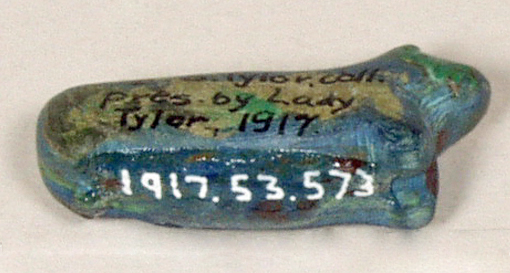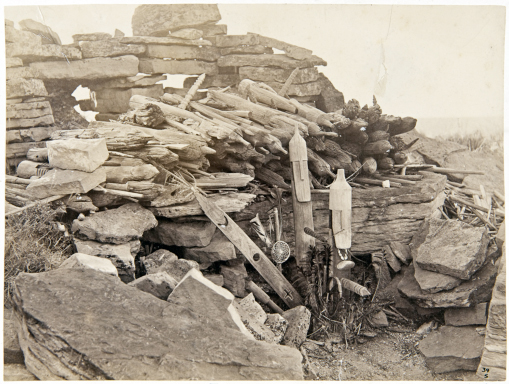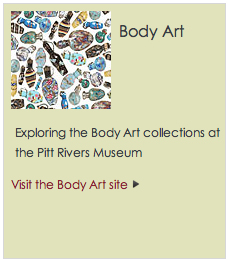Amulet Trail: Hunting amulet, USA
 PRM 1917.53.573
PRM 1917.53.573
This is a malachite amulet made by the Zuni, a Pueblo people of New Mexico in the USA. It resembles an animal and may have been used to bring good luck in hunting. It is one of thirty similar Zuni artefacts that came to the Museum between 1894 and 1918. As here, it is not always clear what type of animal is represented although one is clearly a coyote. Some have stone arrowheads bound to their back and according to one source, they would have been hung around the neck in a deer-skin bag during a hunting expedition.
This example came from the estate of Henry N. Moseley who looked after Pitt-Rivers' collection when it first came to Oxford in 1884. However, he did not collect it himself; the actual collector – and indeed the probable source for all the Zuni amulets in the Museum – may have been Colonel James Stevenson (1840–1888). He started acquiring Zuni objects during a Smithsonian expedition to New Mexico in 1879 and whose collections were distributed after his death.

Photograph of a Zuni shrine, taken during James Stevenson’s expedition to New Mexico, 1879. According to Stevenson such shrines were made in ‘mythic and secluded spots’ and were visited annually by the tribe to deposit new carved figures and perform ceremonies. The successive displacement of old carvings with new ones produced a large pile of ‘deposed deities’, sacred objects and amulets.
Photo by Johannes Karl Hillers. PRM 1998.173.31.1






